How Far Will the Market Correction Go?
An old adage says investors should "sell in May and leave".
Historical analysis shows that summer market is often the weakest month of the year. The mathematical statistics bear this out, because the $10,000 invested in the market from November to April far exceeds the amount invested from May to October.
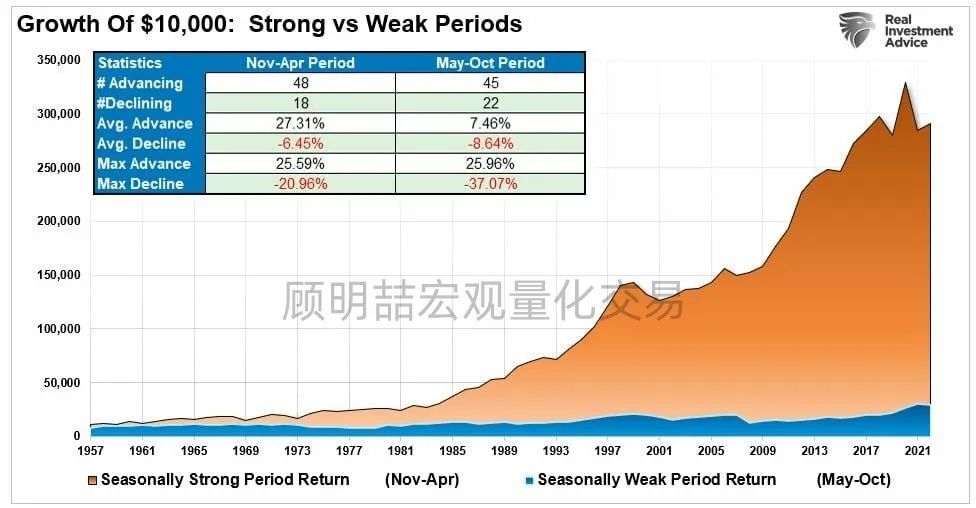
Interestingly, during the "May Sell" period, the maximum pullback/retracement was much larger. The previous important dates of market plunge were October 1929, 1987 and 2008 respectively.
However, it is not every summer that the performance is poor. Historically, there have been many periods when "selling in May" didn't work and the market rose. 2020 and 2021 were examples of large-scale Fed intervention pushing up prices in April and the following summer. In 2022, however, the opposite was true, with a sharp fall in April as the Fed began active rate hike activity the previous month.
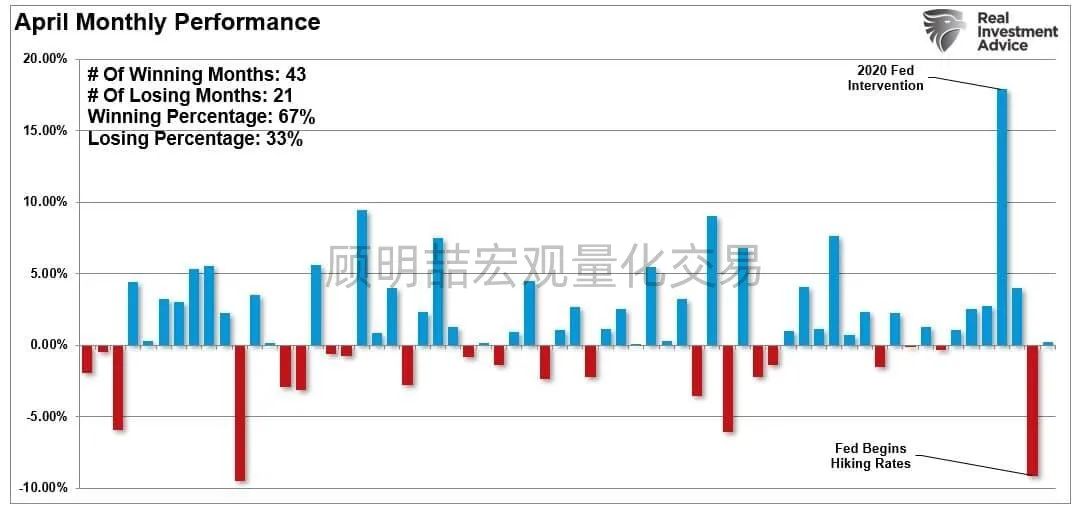
As the end of April approaches, will 2023 be another year when the "sell in May" strategy works? Although no one knows the answer, historical statistics, current economic indicators and technical indicators show that caution is necessary.
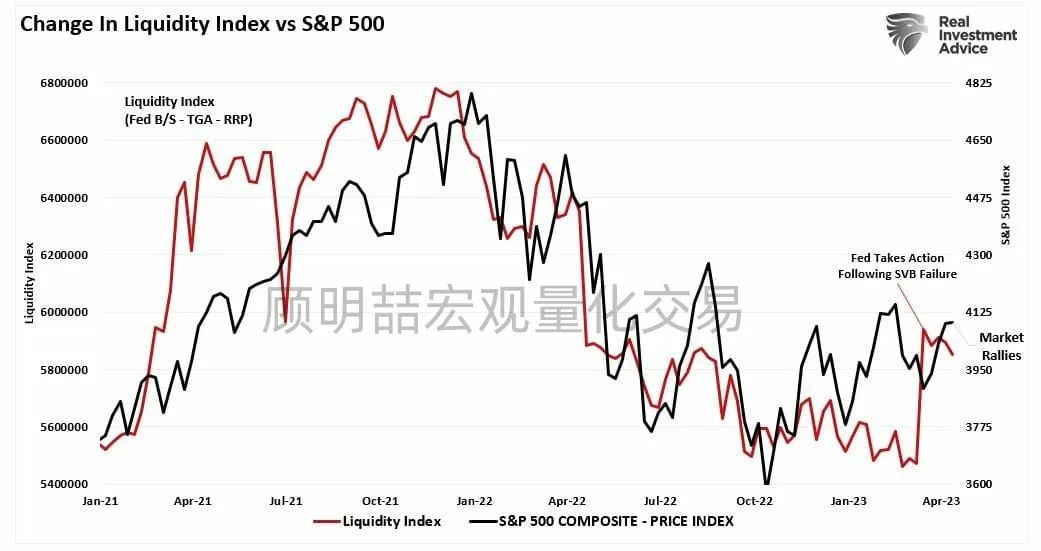
Liquidity reversal
Before we discuss where we are now, we need to quickly review the previous analysis to understand the context. As we discussed, the correction following the strong rebound in January may begin in February.
"In the next few weeks, as the correction continues, the'pain trade 'may go lower. If the bulls win this battle, these key support levels will remain unchanged. Otherwise, as the bearish fundamentals take over, we may start a more serious decline."
The bears did gain control and the market slipped into mid-March. Then we wrote "bullish buy signal mark 4200 to ease the rebound".
"However, as these buy signals emerge, investors should moderately increase their stock exposure, as stock prices are likely to rise in the next two weeks to two months. As the chart shows, the most likely target for the S&P 500 index is 4200 points before it encounters serious resistance, which is a reasonable level to take profits and reduce risks again."
While the market did not bounce back to 4,200, it approached and peaked at an intraday high of 4,168.
The bailout of banks by the Federal Reserve after the collapse of Silicon Valley banks provided another support for this rebound. As discussed in Non-quantitative easing, these loans to banks are not technically quantitative easing. However, from the market point of view, the Fed's balance sheet increase is "the ringing of Pavlov's bell".
"Another way to look at this is through the liquidity measure of the Fed's balance sheet, minus the general account of the Ministry of Finance, and then minus the Fed's reserve plan. This comprehensive indicator has a good correlation with market changes."
The chart below has been annotated and updated since the report. Not surprisingly, given the historical correlation between the liquidity index and the S&P 500 index, the market rose because of increased liquidity. The liquidity index is falling as we approach the "May sell" period, and could fall further as the Treasury and the government wrestle over the upcoming debt ceiling.
As mentioned earlier, it is not only the reversal of liquidity that suggests that selling in May may be cautious, but also technical and economic indicators.
Indicators imply caution
In the latest Bull Bear Report, I discussed many indicators that are undoubtedly worrying and suggest the possibility of an "official" economic recession. Federal Funds rate's upside-down with 10-year Treasury Bond is the most since 1986 (about 10 months before the market crash in 1987).
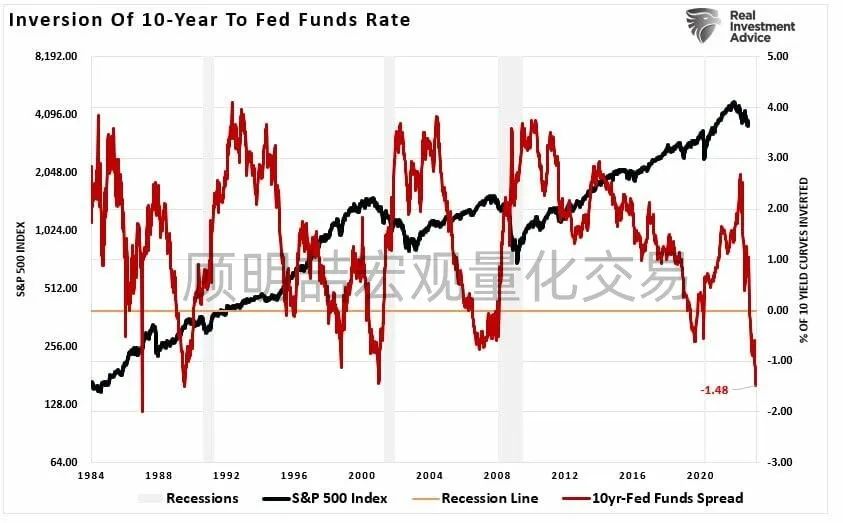
In addition, the recently released Philadelphia Fed Manufacturing Index showed a sharp decline in market sentiment, indicating that the adjustment is more obvious than the current earnings. Historically, such an in-depth reading of the Philadelphia Fed index has been associated with more severe, rather than milder, recessions.
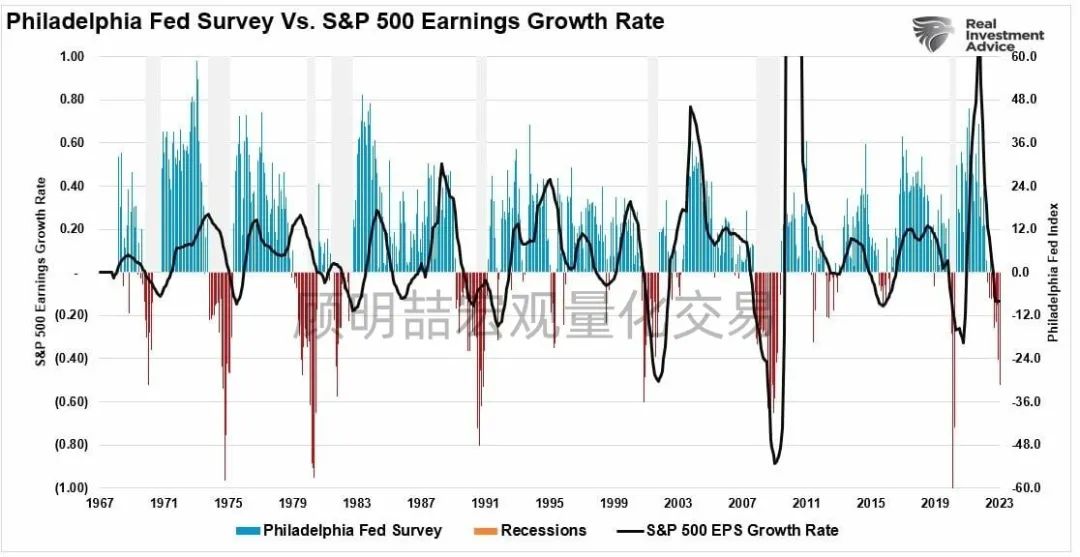
However, in the short term, we are most concerned about the trend of technology price. This is because price behavior represents market psychology. These technical indicators were the main drivers of reducing market exposure in February and increasing again in March. Vertical lines represent every "buy" and "sell" signal last year.
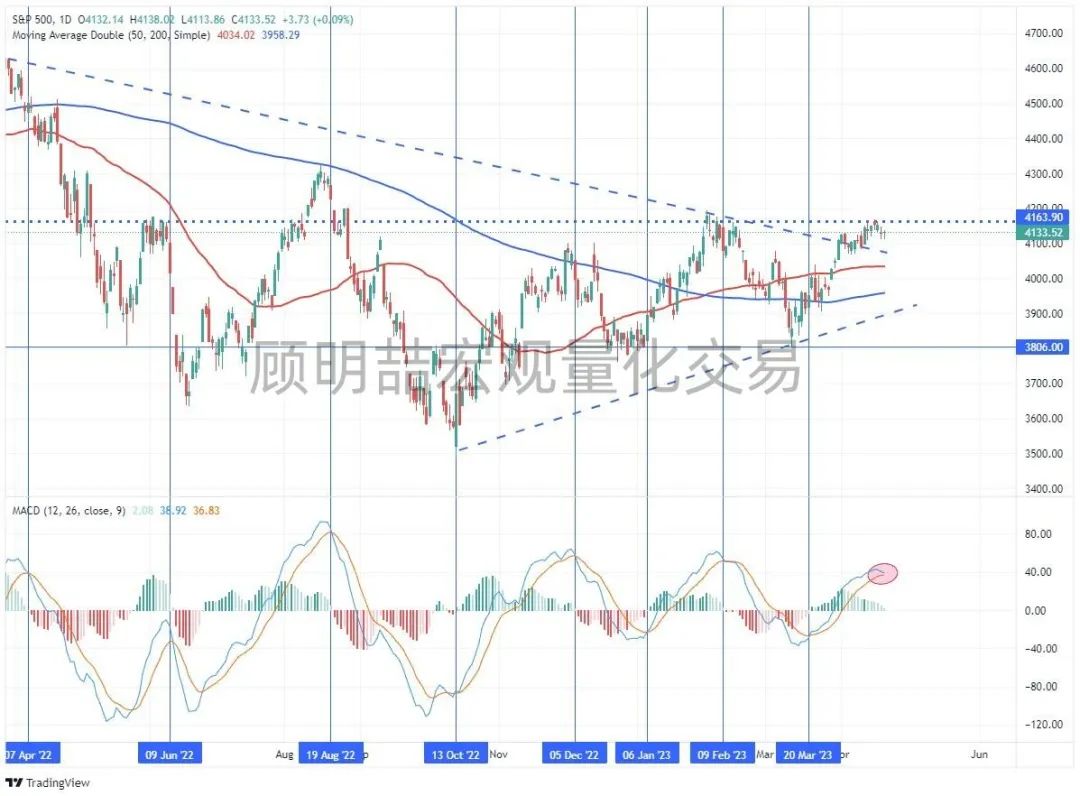
Although these signals are not time indicators of "all-in or all-out" markets, they always provide good signals for increasing and decreasing stock exposure accordingly.
These indicators indicate that investors may "sell in May" and then come back.
The Fed hinted at rate hike
Although the technical indicators themselves may be enough to reduce the risk of entering May, it is worth remembering that the Federal Reserve will rate hike again on the 5th. With every rate hike, we get closer and closer to the Fed breaking something economically or financially. This has been a common occurrence in history, and it is not surprising that negative results have occurred given the radical level of rate hike activities last year.
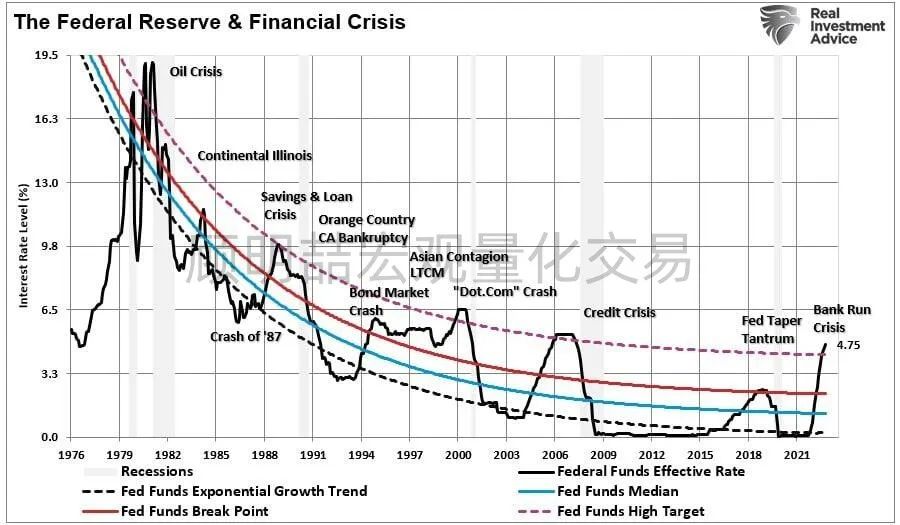
So far, the market has reacted better than expected to rate hike. However, most rate hike have not yet come into play through the economic system. In addition, the economy is still supported by a large increase in the money supply, which still supports economic activities. But that support is fading as the last remnants of the pandemic support package end.
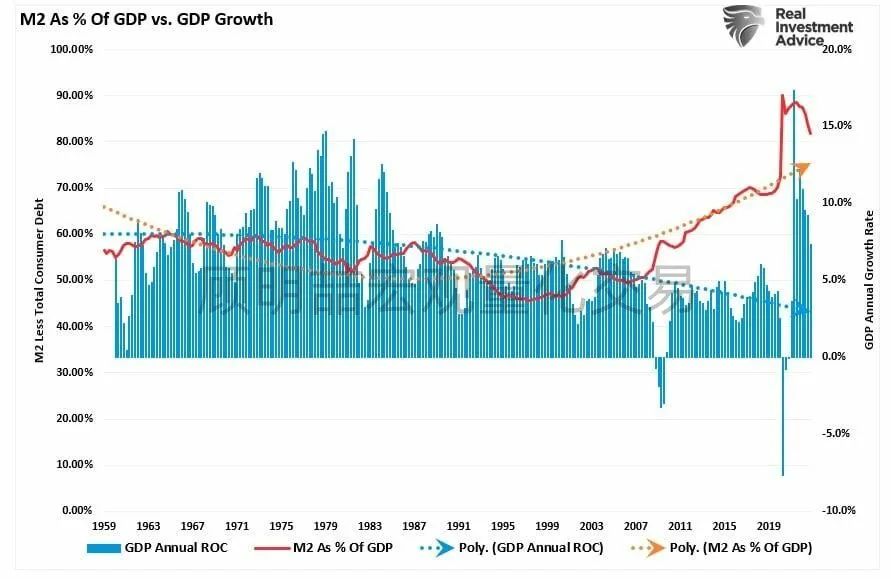
As we enter the traditionally weak summer months, we must note that the bullish trend in the market remains intact. However, as I concluded last weekend:
"Corrections should be acknowledged and expected. As mentioned above, a 10% decline will lead to another pullback/retracement to the low point of the bullish trend channel. If this support holds, then from a purely technical point of view, it will be a logical place to increase exposure to risky assets. "
For these reasons, we raised cash and reduced the stock risk in our portfolio as we entered the seasonally weak summer month.We "sell in May."Will it be wrong to leave? This is certainly possible. If this is the case, we will increase the exposure accordingly when necessary.
However, there may be additional benefits to being cautious as we head into the summer months.
$E-mini Nasdaq 100 - main 2306(NQmain)$ $E-mini S&P 500 - main 2306(ESmain)$ $E-mini Dow Jones - main 2306(YMmain)$ $Gold - main 2306(GCmain)$ $WTI Crude Oil - main 2306(CLmain)$
Disclaimer: Investing carries risk. This is not financial advice. The above content should not be regarded as an offer, recommendation, or solicitation on acquiring or disposing of any financial products, any associated discussions, comments, or posts by author or other users should not be considered as such either. It is solely for general information purpose only, which does not consider your own investment objectives, financial situations or needs. TTM assumes no responsibility or warranty for the accuracy and completeness of the information, investors should do their own research and may seek professional advice before investing.

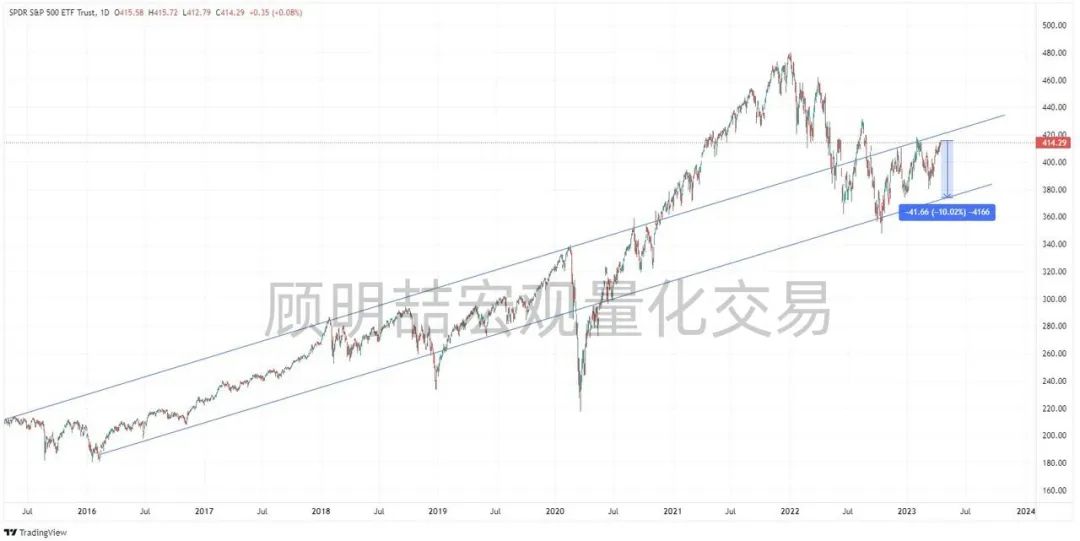
good sharing